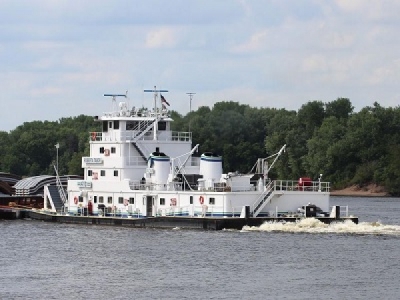
Posted on November 30, 2018
By Brian Todd, Post Bulletin
Some 10 or so landowners around Wabasha have received letters with a gentle request: Think about selling, please.
The St. Paul District of the U.S. Army Corps of Engineers sent letters concerning 15 parcels of land — some landowners owned more than one parcel — looking for willing participants in the Corps’ efforts to create a new dredge material management plan for Lower Pool 4.
“We identified large areas of land that don’t have a specific government ownership,” said Bob Edstrom, the project manager who has overseen the plan.
Kevin Sommerland, who works in the Corps’ real estate department, said the letter was open-ended as far as a timeframe.
“Our need to work with willing landowners will continue,” he said.
The Corps rolled out a 40-year Dredge Material Management Plan in May 2017, but that plan relied heavily on acquiring around 300 acres from Kellogg farmer Willard Drysdale and a piece of property behind a residential neighborhood on River Drive South in Wabasha. Drysdale did not want to sell, and after public pressure from landowners the Corps decided to head back to the drawing board rather than force the issue.
The Corps looked at large tracts of agricultural land around Wabasha that would serve as either temporary or permanent storage sites for dredge material, Edstrom said. Most of the sites that spurred letters are ones that didn’t make the cut from the 2017 draft plan.
“We’re revisiting some tracts of land we’d taken off the table from the previous report,” Edstrom said. “We’re definitely taking the cover back off that (2017 plan) and looking at those.”
For example, the 2017 plan eliminated sites with wetland issues because the Corps would need to buy wetland credits to replace any wetlands that would be covered with dredge material.
“If a site entirely covered in wetlands, we’ll avoid it,” Edstrom said. “But if its just got a little wetland issue, we might consider it.”
The Corps still needs to meet its mandate of developing a plan that has the least environmental impact for the lowest responsible cost.
Edstrom said the Corps is still pursuing its plans in conjunction with the city of Wabasha to fill old Wabasha Sand & Gravel sites with dredge material, which gives the Corps a few years of storage space for sand.
That plan, said City Administrator Chad Springer, covers the cost of moving 270,000 cubic feet of sand annually from temporary storage sites such as Crats Island, Teepeota Point, Wabasha Gravel Pit, and Grand Encampment to final storage at Wabasha Sand and Gravel 1 and 2 sites. However, it does not include the Corps’ cost of dredging the sand and placing it at those temporary sites.
Edstrom said the Corps is taking a different approach toward acquiring land than it did before because of feedback it got during the public comment process that came from the 2017 draft plan.
“Some of the assumptions we made on social impacts were wrong,” he said. “Now we have new assumptions.”
The end goal is to get a plan with at least 20 years of life to it, Edstrom said. That means findings some smaller sites that were initially rejected in favor of the 300 acres on the Drysdale farm.
“We continue to look at how we phase the planning. The first draft relied on Drysdale Farm alternative, using the big site and several nearby smaller ones,” he said. “Now, we’re maximizing the smaller opportunities like Sand & Gravel pits. All those things add up.”
The other option is to utilize Section 217 of the Water Resources Development Act of 1996, which authorizes the Corps to implement public-private partnerships to manage dredged material. Section 217 has never been used with regard to river channels before, Edstrom said, only harbor dredging.
But the Corps has some institutional limitations, he said. The Corps is good at keeping navigation channels open, but not an expert at finding creative uses for dredge material.
To that end, the Corps is working with several universities and the River Resources Forum among others to help identify opportunities to use dredge material. A Section 217 partner could explore uses such as extracting frac sand from dredge material or efficiently backfilling previously mined sites.
That process, he said, is just starting but could become a way to deal with dredge material across the eastern United States where navigation channels are so important to the economy.
Source: Post Bulletin





